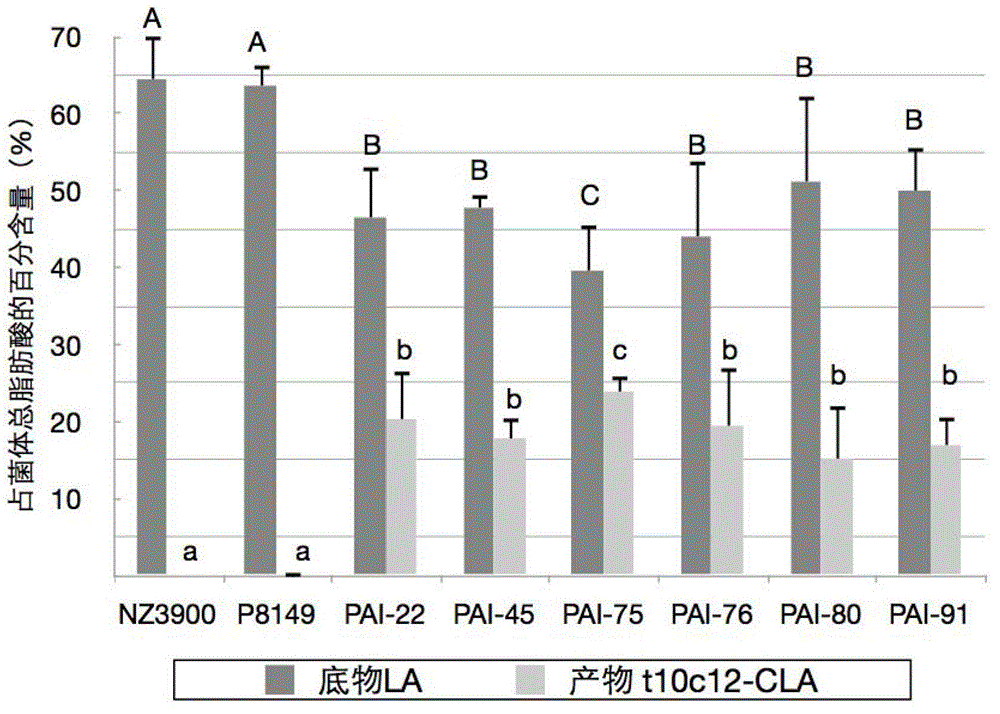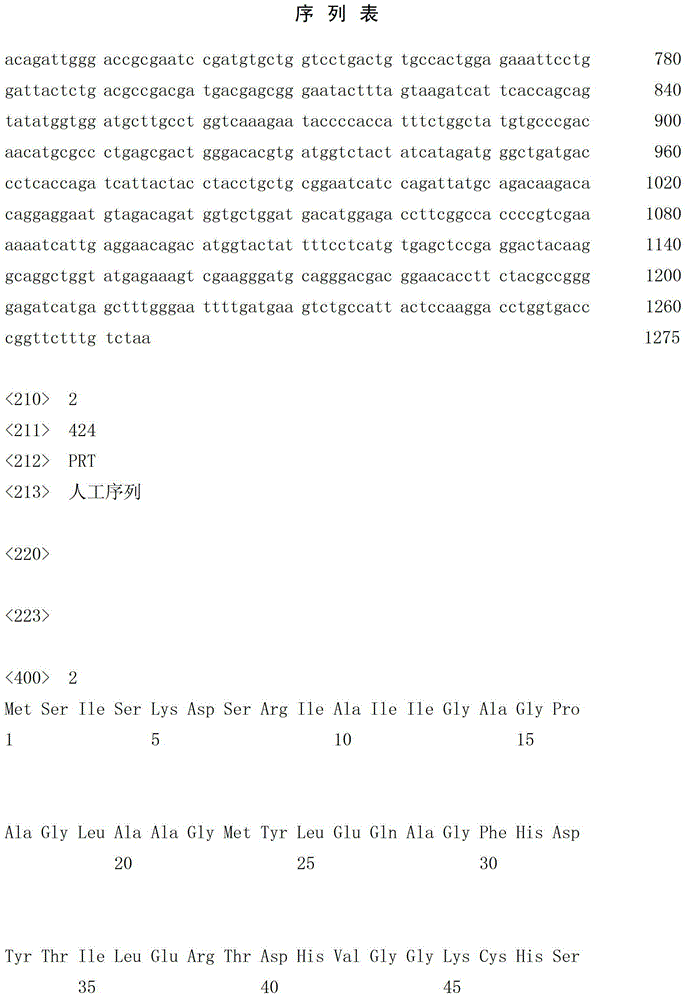Food-grade recombined lactococcal lactis capable of producing conjugated linoleic acid as well as construction method and application thereof
A Lactococcus lactis, food-grade technology, applied in the field of food-grade recombinant Lactococcus lactis producing conjugated linoleic acid and its construction and application, can solve the problems of recombinant food-grade microorganisms that do not have high conversion efficiency of t10c12-CLA, etc.
- Summary
- Abstract
- Description
- Claims
- Application Information
AI Technical Summary
Problems solved by technology
Method used
Image
Examples
Embodiment 1
[0042] Example 1, Construction of recombinant Lactococcus lactis with high conversion efficiency of t10c12-CLA
[0043]In this example, Lactococcus lactis (Lactococcus lactis) NZ3900 is used as the host bacterium, and pNZ8149-PAI is used as the recombinant food-grade expression vector as an example to illustrate the method of constructing recombinant Lactococcus lactis with high conversion efficiency of t10c12-CLA. In this method, after pNZ8149-PAI is transferred into Lactococcus lactis NZ3900 bacteria, the recombinant strains are screened by lactose medium, and the recombinant cells that can grow may carry the exogenous pai gene, which expresses the PAI isomerase Will convert linoleic acid to t10c12-CLA. This expression system avoids the use of antibiotics and does not produce endotoxin, and is an efficient food-grade vector expression system. Here, through the above experimental principles and methods, the pai gene was introduced into food-grade Lactococcus lactis through a...
PUM
 Login to View More
Login to View More Abstract
Description
Claims
Application Information
 Login to View More
Login to View More - R&D
- Intellectual Property
- Life Sciences
- Materials
- Tech Scout
- Unparalleled Data Quality
- Higher Quality Content
- 60% Fewer Hallucinations
Browse by: Latest US Patents, China's latest patents, Technical Efficacy Thesaurus, Application Domain, Technology Topic, Popular Technical Reports.
© 2025 PatSnap. All rights reserved.Legal|Privacy policy|Modern Slavery Act Transparency Statement|Sitemap|About US| Contact US: help@patsnap.com



